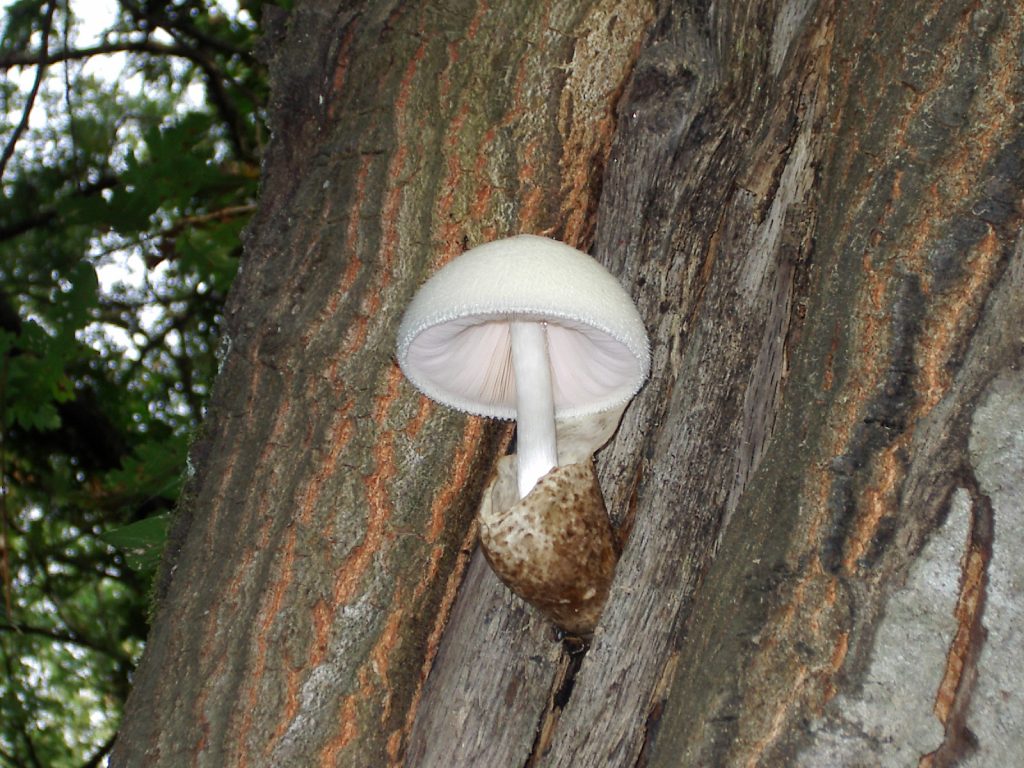Volvariella Volvacea is a species of edible mushroom cultivated in Southeast Asia. In 1822, this mushroom was first cultivated in China. The Chinese introduced it to other Asian countries and the world. This mushroom is available fresh in some regions but canned or dried in other regions. Paddy Straw Mushroom is widely distributed in North America through introduced settings but often found east of the Great Plains. Volvariella Volvacea occupies the third position of the world’s most consumed mushroom and thrives well in tropical and subtropical areas worldwide. Paddy Straw Mushroom is popular because of its different taste, pleasant flavor, high protein concentration, and short cultivation duration. The yearly production of Straw Mushroom reaches a whopping 330 000 tons, covering 80% of worldwide production. The fruiting body of Volvariella Volvacea is used because of its nutritional contents.

My name is Austin Collins.
I've dedicated my life to Mushrooms.
I believe Mushrooms are the best kept secret when it comes to health and well being.
For that reason, I would like to share a company with you that in my opinion makes the best mushroom products on the market.
The company is called Noomadic Herbals, my favorite supplement they make is called "Mushroom Total".
I take their products every day and they have helped me think better and have more energy. Give them a try.
-Austin
Identification and Description
Cap: 5 – 12 cm, shaped like a cone when young, spreading out to widely conic, fitting widely curved or campanulate; dry, marked with stripes and covered in fine soft hairs; grey to browny grey or almost black when young, has a light marginal area; tender, unlined margin but sometimes spitting with age. The white flesh is the same when cut.
Gills: Loose from the stem, closely teeming; short-gills occurring often; white turning pink and finally brownish pink.
Stem: 6 – 12cm in length; 1 – 1.5cm wide; equal, or thinning slowly to the highest point; dry, whitish or brownish; covered in fine soft hair, the base enclosed in a thick, smooth, soft and delicate, bag-like, volva that is light brown to almost black above and whitish beneath; volva stretching 2 – 3 cm high.
Smell: Undistinctive
Taste: Nothing distinctive
Spores: Smooth, has a thick wall, and oval-shaped.
Spore color: Yellowish
Edibility: Edible
Habitat: Feeds on dead or decaying organic matter. Grows in groups or clusters. Found in compost, dead leaves, dead wood, woodchips, gardens, palm oil bunch, water-hyacinth, pericarp wastes, banana leaves, cotton wastes, cocoa bean shell, sugarcane bagasse, greenhouses; thrives all year round but commonly in the summer climatic condition. Straw Mushroom thrives well around 28 – 35°C (82.4 – 95 F).
Volvariella volvacea requires high temperatures for vegetative growth and fruiting. In the open field, It is grown on straw using raised beds. This is an ancient growing method, but the only disadvantage is the low mushroom yield (10-15% of the dry substrate). This is because just straw does not contain enough nutrients as it takes a long time to decompose.
Volvariella Volvacea Look-Alikes
Volvariella Volvacea has deadly and poisonous lookalikes so it’s imperative you know where you’re doing before consuming them. It is very hard to tell apart from Amanita phalloides (Death Cap). Generally speaking Paddy Straw Mushroom has a pink spore print while the Death Cap has a white one.
Volvariella Volvacea Benefits
Volvariella Volvacea has many health benefits. It contains ergothioneine, a potent antioxidant that keeps the body safe from free radicals. Ergothioneine may slow down infections and help improve stomach upset like ulcers or wound whistles. Vitamin A, B, and C are found in this mushroom and may strengthen the immune system. Paddy Straw Mushrooms contains good fats and carbohydrates. It also contains fiber and enzymes that supports the digestive system.
Volvariella Volvacea contains beta-glucan and conjugated linoleic acid, which may help to hinder the growth of prostate and breast cancer cells.
Volvariella Volvacea contains a high amount of calcium and Vitamin D.
Paddy Straw Mushroom is rich in iron, and contains a high amount of potassium.
Volvariella Volvacea Dosage
There is no recommended dosage for this mushroom. If you decide to consume it, please thread with caution.
Volvariella Volvacea Toxicity, Safety & Side Effects
Straw Mushroom contains heat-labile cardiotoxic proteins called volva toxin. This toxin causes lysis of human red blood cells, the mitochondria of liver cells, swelling tumor cells, inhibition of protein biosynthesis, and may cause cardiac arrest. However, subsequent research shows that the toxin volvatoxin A2 can be instrumental in tackling solid tumors because it is not toxic to animals.
Studies suggest that patients who suffered fungal infection linked to straw mushroom during naval cord blood transplantation may have probably inhaled the fungal spores.
Volvariella Volvacea may gather heavy metals like lead from a contaminated substrate. This is unhealthy for humans as it can cause deadly effects like neurological damage, renal impairment, blood disorders, and hypertension. Therefore, care must be taken before feasting on mushrooms cultivated on metal-contaminated substrates.
There is no record of any allergies or drug interactions. If you need to consume this mushroom, please check in with a doctor. While this mushroom has good nutritional value, but its reaction on pregnant women is unknown.
References:
Cheung, L., & Cheung, P. (2004, April 09). Mushroom extracts with antioxidant activity against lipid peroxidation.
Chiu, K., Lam, A., & Pang, P. (2006, January 20). Cardiovascular active substances from the Straw mushroom, Volvariella volvacea.
MushroomExpert.Com. (n.d.). Volvariella volvacea
Hsu, H., Hsu, C., Lin, R., Kao, C., & Lin, J. (1997, April 15). Fip-vvo, a new fungal IMMUNOMODULATORY PROTEIN isolated from Volvariella volvacea.




